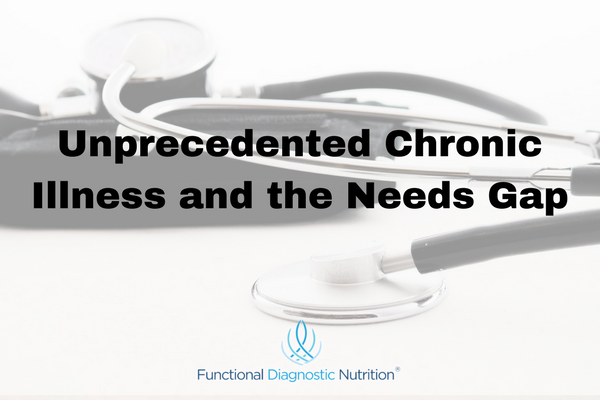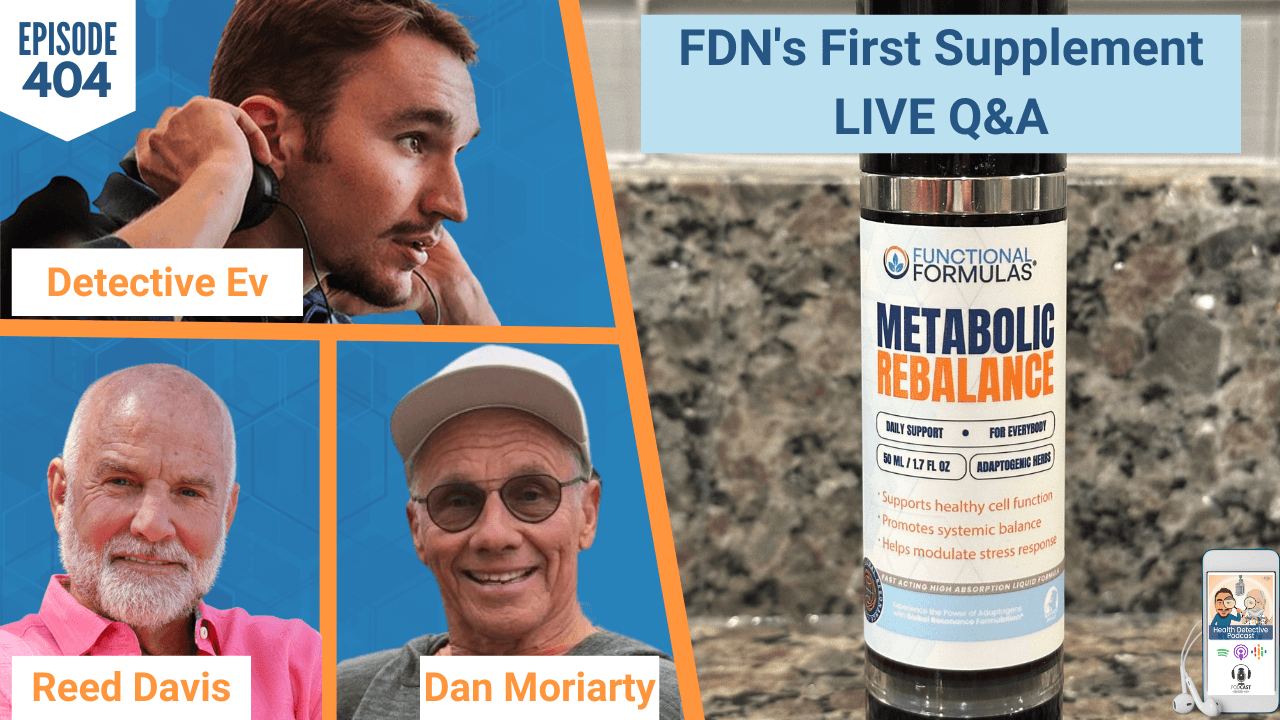An avalanche of chronic illness is bearing down on us. Lifestyle medicine outperforms conventional medicine when it comes to chronic disease. 91% of our overall health comes from our choices – NOT chance. (Dr. Russell Jaffe, M.D.) (1) In the coming years an army of trained health coaches will be needed to fill the gap between clinicians and patients. Dr. Jaffe estimates that we will need between 50,000 and 70,000 new health coaches in the coming years.
What role do health coaches play, and why do they have solutions for this chronic health crisis?
They bridge the gap between medical professionals and patients, assisting with necessary education and lifestyle changes. We call it the needs gap.
Doctors play a directive role in a patient’s care, but one study showed that half of all patients leave their doctor’s visits with little understanding of their health status or what to do about it. (2) Coaches have a collaborative role, however, educating, supporting, and contextualizing every aspect of their clients’ lives, enabling them to understand what they need to do to improve their health.
Unprecedented Chronic Illness
In 2008 45% of the American population had one or more chronic illness. That was about 133 million people. As of 2012 that number rose to about half the population having one or more chronic illness and 1/4 of the population having two or more. (3)
It’s hard to find a person now who hasn’t been directly or indirectly affected by chronic illness.
A huge contributing factor to this new paradigm is nutrition — or lack of micronutrient density in our diets.
Doctors and nutrition
Doctors receive little nutrition training, if any at all, yet people consider doctors the most trusted source of nutrition information.
Here are some shocking numbers:
- In 1980 less than 1/4 of medical schools required a single course on nutrition.
- By 2004, 30% of schools required one course in nutrition — about 11 – 20 hours of nutrition training. (5)
- In the latest update on these statistics, 2010 revealed the lowest nutrition requirement on record in medical schools. (6)
At best, then, doctors are required the equivalent of a long weekend workshop.
It’s health care’s low-hanging fruit. If we emphasized the powerful role of nutrition, we could dramatically reduce suffering and needless death. (Michael Greger M.D. FACLM) (7)
Get your certification at FDN and be one of the 50,000 new health practitioners needed!
Reed Davis developed the FDN model while working at the Better Health & Wellness Center in Poway, CA during the 90s. He served as nutritionist and case manager. As every case passed through his triage, he tailored the clinic’s services to clients’ needs. This gave him an opportunity to track progress on many cases. He formed a successful model that became Functional Diagnostic Nutrition®.
Most clients at the clinic had seen at least four doctors and had a long trail of trial and error behind them. They had been offered drugs or surgery and didn’t want that, or they had been told they weren’t good candidates for the available treatment.
He decided he would be the last practitioner they needed to see, and he began running labs that would reveal opportunities for metabolic correction. He worked with clients to adjust lifestyle habits that influenced these areas, and they got better.
He made some surprising observations:
- People with the same complaints had different causes. Two people with thyroid symptoms might show up, but one had digestion issues and the other had liver problems because of toxin exposure.
- Working non-specifically on general health principles produced better results than laser focusing on symptoms or conditions. A “take this for that” approach did not work on these metabolic issues.
- Those making adjustments nearest to the underlying cause made the best progress.
- His clients all had one thing in common. He called it Metabolic Chaos®.
- As long as clients worked on removing contributors to Metabolic Chaos® symptoms improved, even if far removed from the cause.
As he saw what worked and what didn’t, he developed the D.R.E.S.S. For Health Success® program taught at FDN. DRESS is an acronym that stands for Diet, Rest, Exercise, Stress reduction, and Supplementing.
The problem with root cause
The mantra is “get to the root cause,” but there’s a hidden trap in that approach. A belief that one test will reveal a single cause is faulty. Unfortunately, we’re 50 years away from that technology, and we may never know a person’s root cause. Working on general principles of metabolic correction will have a positive influence anyway.
We’ve all seen people who can’t get over a virus or infection. Focusing on the infection, hitting it with more antibiotics, doesn’t heal the body. Priming the environment in the body makes it easier to get rid of the infection, and it stays away. The immune system has been restored. In other words, the infection isn’t the real problem, Metabolic Chaos® is.
Healing occurs when you remove the stressors causing Metabolic Chaos.
The problem with symptom relief
Medicine overrides the body. It’s a laser-focused machine gun, trained on taking out one issue. Without realizing it, we’re treating test results and single complaints, not people.
The main problem with symptom relief is that nothing has been done to remove the upstream stress, and new symptoms will appear somewhere else. Now libido is low, and we start thinking, “I’ll just run another hormone test.” You find low testosterone, and think you found a new problem. They use a testosterone patch, but the improvement doesn’t last. This is a new and different cycle of trial and error, caused by chasing symptoms. It takes discipline to continue working upstream on metabolic correction.
The Metabolic Chaos cascade happens and eventually leads to disease and symptoms in one body system first. If it’s the endocrine system, they see an endocrinologist. They don’t go back to the real problem, and they continue to treat at that end point. Most medicine only works at that end point. We need to relieve the stress on the system.
Health coaches don’t need to diagnose or treat anything specifically. It’s relieving to know that we can help someone with thyroid problems by addressing the whole body non-specifically.
How we work: the three phases
A well-trained FDN practitioner will initially provide relief with natural supplements while working on general principles and course correction.
First, we assess the underlying conditions and contributors to Metabolic Chaos with functional labs, and other tools for correlating the whole picture. We identify stressors that can be eliminated in the following systems: hormone, immune, digestion, detoxification, energy production, and nervous systems. (H.I.D.D.E.N.)
Second, we customize a 90 day D.R.E.S.S protocol aimed at reducing stress on the body.
Third, we continue coaching up function and coaching down contributors to Metabolic Chaos®. Coaching is like sailing. Along the way, we make course corrections, as needed. There’s no powerboat to healing. You have to tack and come about. It’s very stress free when you have the right paradigms. This is a way of thinking.
Clients invariably get better.
Causal factors are resolved, weaknesses are revealed, function is restored. As we go, the client is getting educated about how to maintain better health for themselves. They develop knowledge and skills, and they feel empowered to move forward on their own.
By unraveling Metabolic Chaos® you can fill the needs gap and stop the cycle of trial and error
If you are a patient interested in working with a trained practitioner and learning this model of self-care, go to fdnselfcare.com to find a qualified FDN practitioner.
Go to functionaldiagnosticnutrition.com to learn more about our self-paced, online course. Being a health detective is exciting work. Healing happens when we support the whole body.
| Sources:
(1) Jaffe, Russell. 5 Key Strategies to Help Your Patient and Your Practice. drrusselljaffe.com. (2) Bennett, Heather D., et al. “Health Coaching for Patients With Chronic Illness.” Family Practice Management, The American Academy of Family Physicians, 1 Oct. 2010, www.aafp.org/fpm/2010/0900/p24.html#fpm20100900p24-b13. (3) “Chronic Diseases: The Leading Causes of Death and Disability in the United States” Centers for Disease Control and Prevention, 28 June 2017, www.cdc.gov/chronicdisease/overview/index.htm. (4) Adams, Kelly M et al. “Status of Nutrition Education in Medical Schools,” The American journal of clinical nutrition 83.4 (2006): 941S–944S. Print. (5) Adams, Kelly M., Martin Kohlmeier, and Steven H. Zeisel. “Nutrition Education in U.S. Medical Schools: Latest Update of a National Survey.” Academic medicine : journal of the Association of American Medical Colleges 85.9 (2010): 1537–1542. PMC. Web. 16 Feb. 2018. (6) Written By Michael Greger M.D. FACLM on June 8th, 2017. “How Much Nutrition Education Do Doctors Get?” NutritionFacts.org, nutritionfacts.org/2017/06/08/how-much-nutrition-education-do-doctors-get/. |







